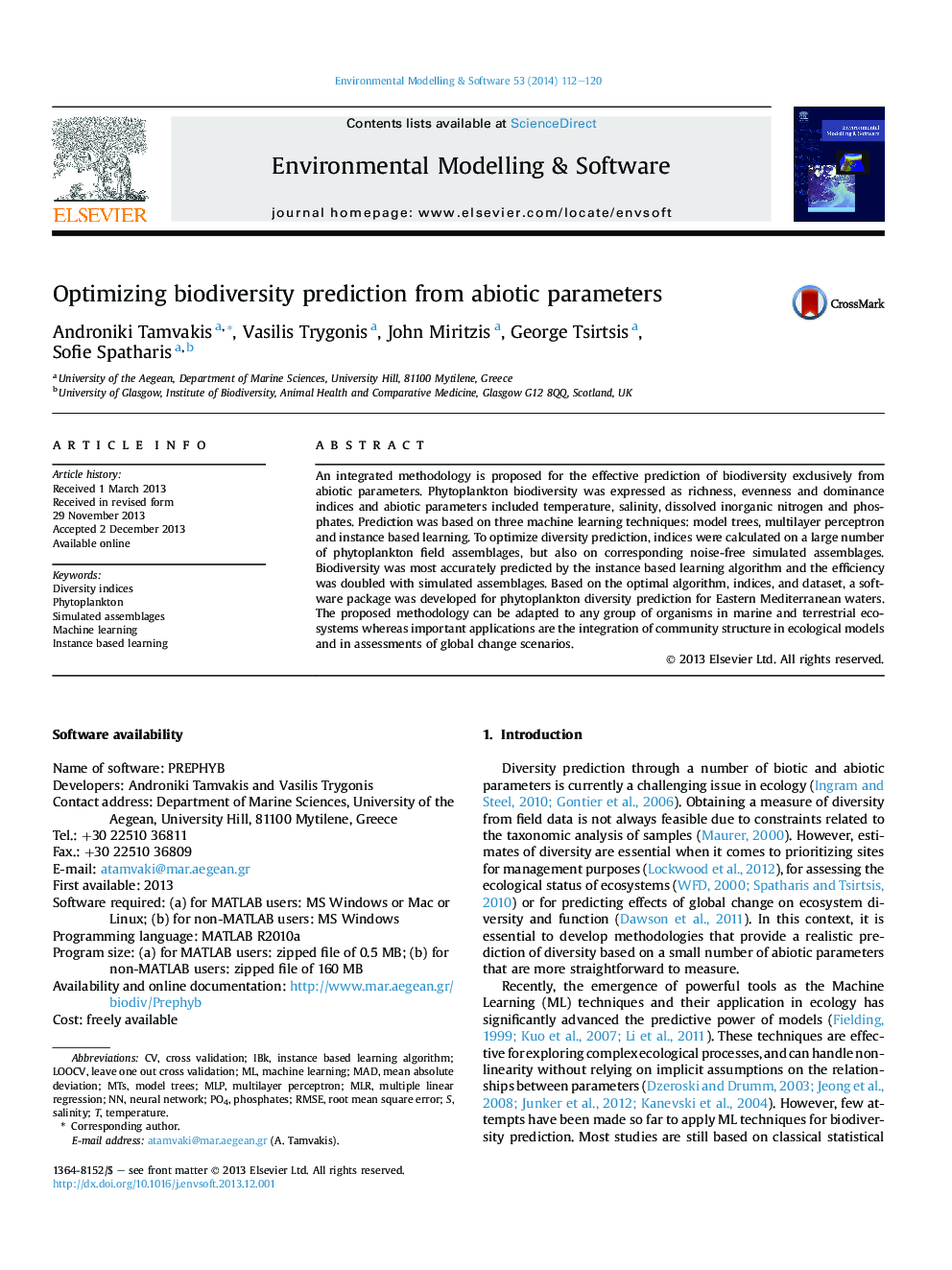| Article ID | Journal | Published Year | Pages | File Type |
|---|---|---|---|---|
| 6963948 | Environmental Modelling & Software | 2014 | 9 Pages |
Abstract
An integrated methodology is proposed for the effective prediction of biodiversity exclusively from abiotic parameters. Phytoplankton biodiversity was expressed as richness, evenness and dominance indices and abiotic parameters included temperature, salinity, dissolved inorganic nitrogen and phosphates. Prediction was based on three machine learning techniques: model trees, multilayer perceptron and instance based learning. To optimize diversity prediction, indices were calculated on a large number of phytoplankton field assemblages, but also on corresponding noise-free simulated assemblages. Biodiversity was most accurately predicted by the instance based learning algorithm and the efficiency was doubled with simulated assemblages. Based on the optimal algorithm, indices, and dataset, a software package was developed for phytoplankton diversity prediction for Eastern Mediterranean waters. The proposed methodology can be adapted to any group of organisms in marine and terrestrial ecosystems whereas important applications are the integration of community structure in ecological models and in assessments of global change scenarios.
Keywords
Related Topics
Physical Sciences and Engineering
Computer Science
Software
Authors
Androniki Tamvakis, Vasilis Trygonis, John Miritzis, George Tsirtsis, Sofie Spatharis,
